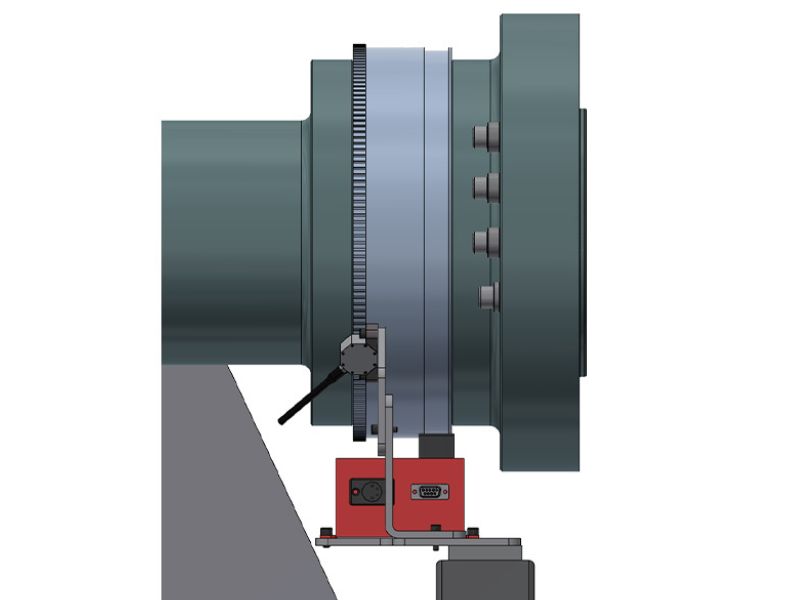Interference-Resistant, Inductive Torque Measurement for High-Dynamic Powertrains in Electric Machines
Electric motors are gaining increasing importance not only in the field of e-mobility, but also in heavy machinery such as cranes and drilling systems, where they are increasingly used in the form of hybrid drives. These applications are subject to extreme mechanical loads, placing high demands on component safety and fatigue strength—not least because machine failure can lead to significant costs.
Overengineering is not an option, however, as these systems must also meet the highest efficiency standards. The use of hybrid drives further adds to the complexity by introducing stringent weight constraints.
Against this backdrop, reliable test rigs for component monitoring and qualification are critical for the industry. To accurately capture all acting forces, high-dynamic data acquisition is essential. In particular, implementing precise measurement on rotating components has historically posed significant challenges.
Compact inductive transmission methods with high sampling rates have, until now, been susceptible to interference—especially in close proximity to powerful inverters. Alternative solutions often required large, complex stator antennas that tightly encased the rotating system. These antennas, in turn, were prone to damage from drivetrain vibrations.
Our Solution: Innovative, Interference-Resistant Data Transmission with Maximum Flexibility
Our newly developed contactless measurement transmission system is based on a modulation-based inductive method and enables interference-resistant transmission of up to 40,000 measured values per second—even in environments with high electromagnetic interference from powerful inverters. Both the power supply to the rotating sensor and bidirectional data transfer are achieved through a single, compact, and easily integrated stator antenna—over just one transmission channel.
The stator antenna can either be integrated directly into the evaluation unit or implemented remotely, in line with the modular architecture established across all MANNER systems.
Technical Features:
- Combined power and data transfer over a single inductive link
- Compact stator antenna with flexible mechanical integration
- High resistance to electromagnetic interference, even in EMC-critical environments
- No complex stator structure or tight mechanical enclosure required
- Mechanically robust design – resistant to drivetrain vibrations
Functionality and Signal Output:
In addition to primary signals (e.g., torque), the sensor unit can also process additional sensor data such as temperature, strain, and more. Output options include:
- Raw signals via standard analog outputs (current, voltage, frequency)
- Digital interfaces such as EtherCAT, CAN, SPI
- Calculated metrics such as power, average values, peak values
- Real-time signal processing: FFT, scope, channel correlation via MAcquisition software
A high-resolution rotational speed measurement feature, with up to 1024 pulses per revolution, is fully integrated. Additional sensor systems (e.g., for temperature compensation) can also be included to compensate for material-specific influences such as the temperature-dependent modulus of elasticity.
Proven Performance: In Use with the XtreMAX 30 kNm Torque Flange
This new technology is already in successful use within the high-performance XtreMAX 30 kNm torque measurement flange on test benches. A key advantage is the localized stator antenna, which is significantly less sensitive to vibrations within the drivetrain.
Speed is measured with a resolution of 1024 pulses per revolution. To ensure maximum measurement precision, temperature-dependent variations in the modulus of elasticity are fully compensated through advanced temperature calibration.
The system itself consists of the strain gauge for torque measurement, the sensor signal amplifier, and the OptiMA evaluation unit. Depending on the installation environment, the desired sensor signal amplifier can be flexibly chosen as an end-of-shaft version or applied on the shaft with a rotor antenna kit.


